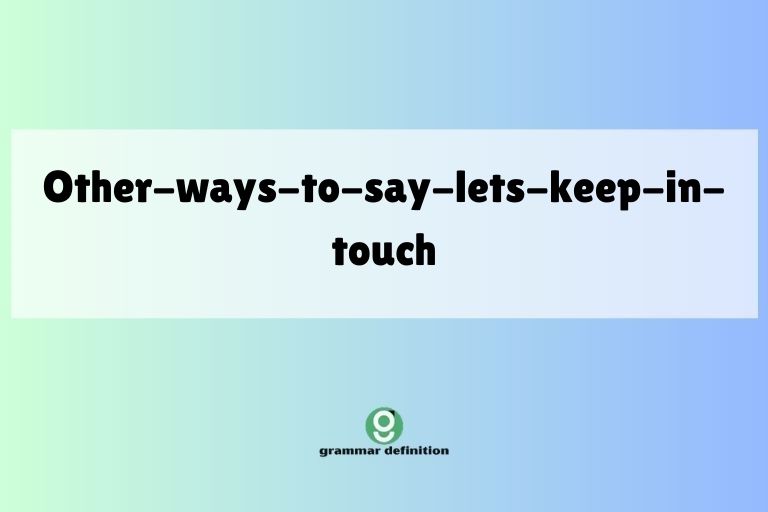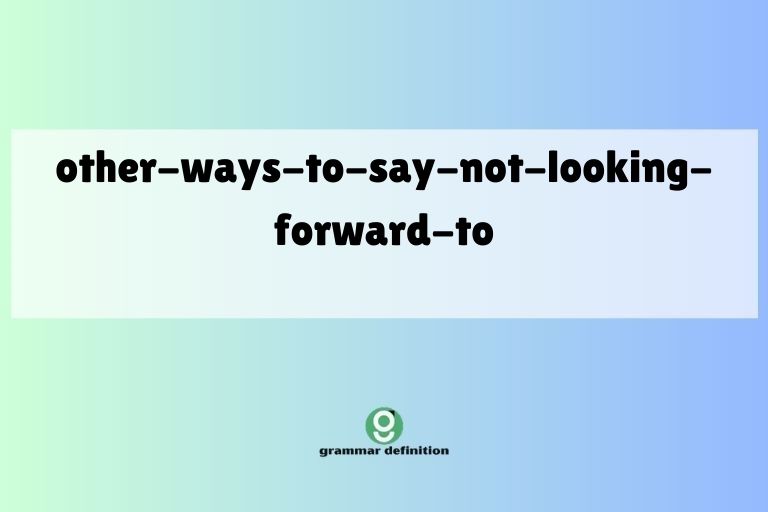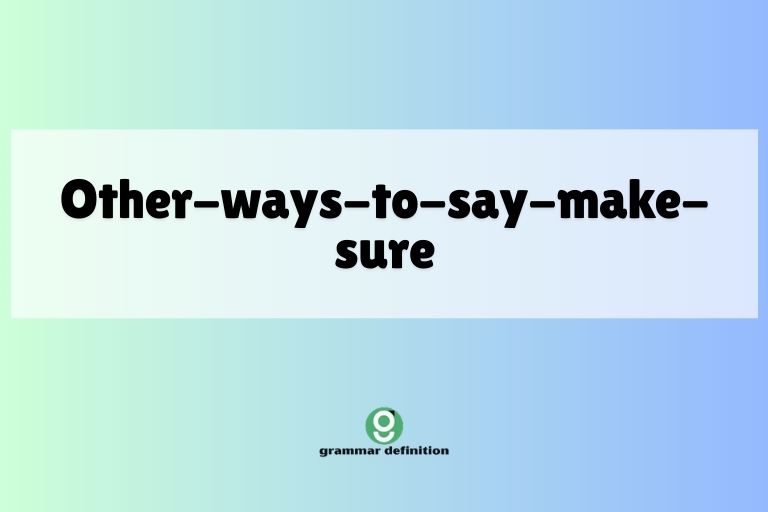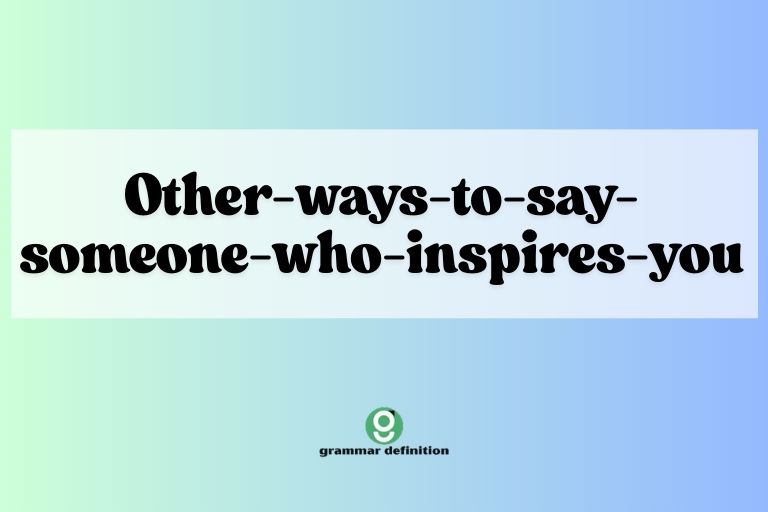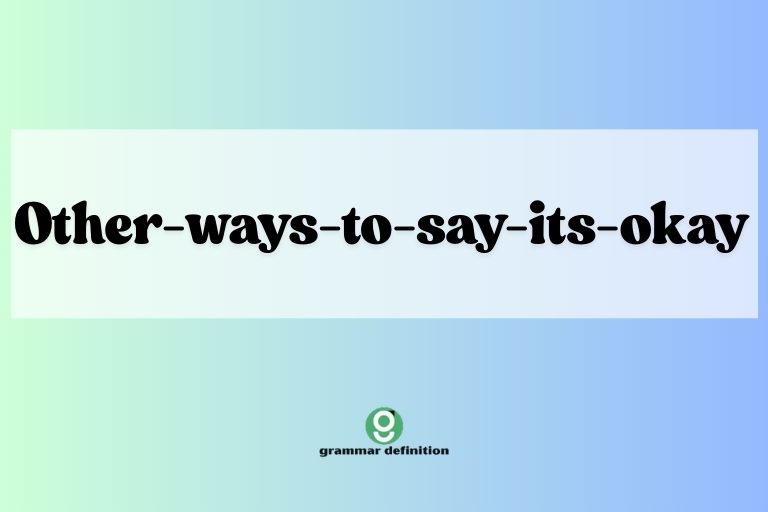Expressing Unanswerable Questions: A Grammar Guide
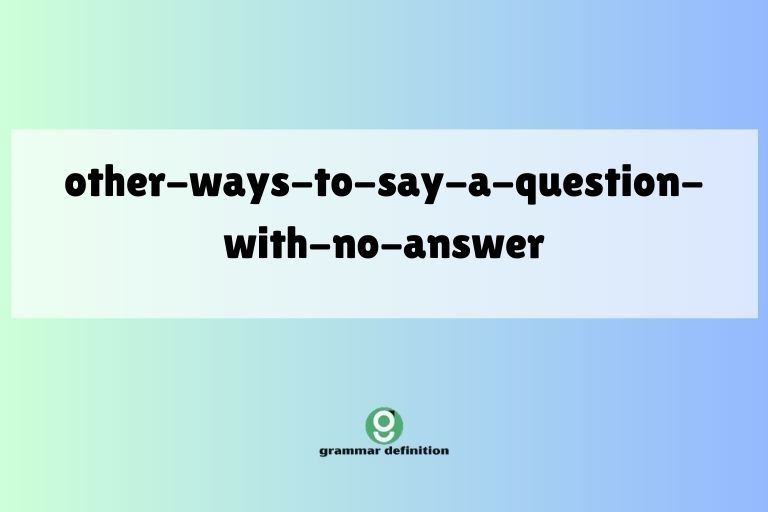
In everyday conversation, we often ask questions that don’t necessarily require or expect a direct answer. These questions, sometimes rhetorical or simply expressions of surprise, frustration, or contemplation, play a crucial role in conveying emotions and engaging in social interaction.
Mastering the art of posing unanswerable questions allows you to inject nuance, emphasis, and personality into your communication. This article explores various ways to phrase such questions, their grammatical structures, and their effective use in different contexts.
Whether you’re an English language learner or a native speaker looking to refine your expressive skills, this guide will provide valuable insights and practical examples to enhance your understanding and usage.
This comprehensive guide will cover different types of unanswerable questions, structural patterns, usage rules, common mistakes, and practice exercises. By the end of this article, you will be equipped with the knowledge and skills to effectively use unanswerable questions in your daily communication, adding depth and color to your conversations.
Table of Contents
- Introduction
- Definition of Unanswerable Questions
- Structural Breakdown
- Types and Categories
- Examples
- Usage Rules
- Common Mistakes
- Practice Exercises
- Advanced Topics
- FAQ
- Conclusion
Definition of Unanswerable Questions
An unanswerable question, in the context of grammar and communication, is a question that is not intended to elicit a direct or informative response. Instead, it serves various other purposes, such as making a point, expressing an emotion, or engaging the listener in a thought process.
These questions often imply an obvious answer or no answer at all. They are used to emphasize a statement, provoke thought, or convey feelings such as surprise, frustration, or disbelief.
Unanswerable questions are also known as rhetorical questions, though the broader category includes questions expressing emotions that don’t necessarily seek to persuade.
The primary function of an unanswerable question is not to gain information but to achieve a specific communicative effect. This effect can range from highlighting the obvious to challenging assumptions or simply venting feelings.
These questions are powerful tools in rhetoric, literature, and everyday conversation, adding depth and emotional resonance to communication. Recognizing and understanding these questions is essential for effective communication and comprehension of nuanced language.
Structural Breakdown
The structure of unanswerable questions generally follows the standard question formation rules of English grammar, but with a twist. While the word order and auxiliary verbs remain consistent with typical questions, the intonation and context often signal that no actual answer is expected.
The structural elements include:
- Auxiliary verb (if needed): Such as do, be, have, or modal verbs like can, should, will.
- Subject: The person or thing the question is about.
- Main verb: The action or state being questioned.
- Question word (optional): Such as who, what, where, when, why, how.
- Tag questions: Short questions added to the end of a statement, inviting agreement (e.g., “It’s a beautiful day, isn’t it?”).
However, the key difference lies in the context and the speaker’s intention. The intonation might be raised at the end, as with any question, but the overall delivery often conveys a sense of finality or obviousness.
For example, “Is the sky blue?” is grammatically a question, but in most contexts, it’s an unanswerable question because the answer is self-evident.
Types and Categories
Unanswerable questions can be categorized based on the specific purpose they serve and the emotion they convey. Understanding these categories helps in recognizing and using them effectively.
Rhetorical Questions
Rhetorical questions are posed for effect rather than to elicit an answer. The speaker implies that the answer is obvious or doesn’t require stating.
They are often used to persuade, emphasize a point, or provoke thought. Rhetorical questions are a staple of persuasive speaking and writing.
Questions Expressing Surprise
These questions convey a sense of astonishment or disbelief at a particular situation or event. They often use heightened intonation and are not meant to be answered literally.
Instead, they express the speaker’s emotional reaction.
Questions Expressing Frustration
Questions expressing frustration are used to vent dissatisfaction or annoyance. They often highlight the absurdity or difficulty of a situation.
The speaker is not seeking a solution but rather an outlet for their feelings.
Questions Expressing Disbelief
These questions indicate that the speaker finds something hard to believe or accept. They challenge the validity or plausibility of a statement or event.
The underlying tone is one of skepticism or incredulity.
Questions Expressing Helplessness
Questions expressing helplessness convey a sense of being overwhelmed or unable to cope with a situation. They often imply a lack of control or solutions.
The speaker is expressing their vulnerability and need for support.
Tag Questions for Confirmation
Tag questions are short questions added to the end of a statement, seeking confirmation or agreement. While they technically seek a response, they often function as unanswerable questions when the statement is obvious or the speaker expects automatic agreement.
They can also be used to soften a statement or make it more polite.
Examples
To illustrate the different types of unanswerable questions, let’s examine various examples categorized by their function.
Rhetorical Question Examples
The following table provides example rhetorical questions, demonstrating how they are used to make a point or persuade, rather than to seek information.
| Rhetorical Question | Purpose |
|---|---|
| “Is water wet?” | Emphasizes an obvious truth. |
| “Do birds fly?” | Highlights a self-evident fact. |
| “Does anyone really believe that?” | Challenges the credibility of a statement. |
| “What’s the point?” | Expresses futility or lack of purpose. |
| “Who cares?” | Indicates indifference or lack of concern. |
| “Isn’t it obvious?” | Highlights the clarity of a situation. |
| “Can pigs fly?” | Emphasizes the impossibility of something. |
| “What difference does it make?” | Suggests that something is inconsequential. |
| “Who am I to judge?” | Expresses humility or reluctance to criticize. |
| “Are you kidding me?” | Expresses disbelief or astonishment. |
| “What else could I do?” | Justifies a past action. |
| “Haven’t we tried that before?” | Expresses skepticism about a proposed solution. |
| “Does money grow on trees?” | Emphasizes the scarcity of resources. |
| “What’s done is done, isn’t it?” | Accepts a past event as unchangeable. |
| “If I don’t do it, who will?” | Highlights a sense of responsibility. |
| “What’s not to like?” | Expresses strong approval or enthusiasm. |
| “Are we there yet?” | Expresses impatience or eagerness. |
| “Do you want to live forever?” | Challenges someone’s reluctance to take a risk. |
| “Who wouldn’t want that?” | Implies that something is universally desirable. |
| “What were you thinking?” | Expresses disapproval or disbelief about someone’s actions. |
| “Should I stay or should I go?” | Expresses indecision or internal conflict. |
| “Haven’t I been good to you?” | Implies someone is ungrateful. |
| “Does anyone even care?” | Expresses doubt about others’ concern. |
| “What could possibly go wrong?” | Expresses overconfidence or naivety (often ironically). |
Surprise Question Examples
The following examples showcase questions used to express surprise or astonishment, where the speaker is reacting to unexpected information or events.
| Question Expressing Surprise | Context |
|---|---|
| “Did that really just happen?” | Expressing disbelief at an unexpected event. |
| “Are you serious?” | Showing surprise at a statement. |
| “You mean it?” | Questioning the truth of surprising news. |
| “Is that even possible?” | Expressing doubt at the feasibility of something. |
| “Can you believe it?” | Inviting agreement in one’s surprise. |
| “What a surprise, isn’t it?” | Expressing mild surprise. |
| “Really?” | Showing surprise in a concise way. |
| “He did what?” | Expressing shock at someone’s action. |
| “She said that?” | Expressing disbelief at someone’s statement. |
| “They went where?” | Expressing surprise at a location. |
| “How can that be?” | Expressing disbelief at a situation. |
| “Is this for real?” | Questioning the authenticity of something. |
| “Am I dreaming?” | Expressing disbelief at a surreal situation. |
| “What are the odds?” | Expressing surprise at a coincidence. |
| “Could you imagine?” | Expressing awe at a hypothetical situation. |
| “Did you see that?” | Seeking validation of a shared surprising experience. |
| “Was I the only one who noticed that?” | Expressing surprise and seeking confirmation. |
| “Is that a joke?” | Expressing surprise and questioning the seriousness of a statement. |
| “Are my eyes deceiving me?” | Expressing disbelief at what one is seeing. |
| “What in the world?” | Expressing general surprise or confusion. |
| “Where did that come from?” | Expressing surprise at the sudden appearance of something. |
| “How did that happen?” | Expressing surprise and confusion about an event. |
| “Who would have thought?” | Expressing surprise at an unexpected outcome. |
| “You’re pulling my leg, right?” | Expressing disbelief and questioning the truthfulness of a statement. |
Frustration Question Examples
These questions are used to express frustration or annoyance, often highlighting the absurdity or difficulty of a situation.
| Question Expressing Frustration | Context |
|---|---|
| “Why does this always happen to me?” | Expressing personal frustration. |
| “How much longer do I have to wait?” | Expressing impatience. |
| “Why is this so difficult?” | Expressing frustration with a task. |
| “What am I supposed to do now?” | Expressing confusion and helplessness. |
| “Why bother?” | Expressing a sense of futility. |
| “Isn’t there anything that can go right?” | Expressing pessimism. |
| “Why can’t people just listen?” | Expressing frustration with others’ behavior. |
| “When will this ever end?” | Expressing frustration with a prolonged situation. |
| “What was I thinking?” | Expressing regret and self-reproach. |
| “Why is it always me who has to do everything?” | Expressing resentment and feeling overburdened. |
| “What’s the point of even trying?” | Expressing discouragement and futility. |
| “Why does everything have to be so complicated?” | Expressing frustration with complexity. |
| “What a waste of time, isn’t it?” | Expressing regret and frustration over wasted effort. |
| “How many times do I have to say it?” | Expressing frustration with repetition. |
| “Why can’t anything be easy?” | Expressing frustration with constant challenges. |
| “Is there no end to this madness?” | Expressing frustration with a chaotic situation. |
| “Why is it always my fault?” | Expressing frustration with blame. |
| “What do they expect me to do?” | Expressing frustration with unreasonable expectations. |
| “Why can’t they ever get it right?” | Expressing frustration with others’ incompetence. |
| “How much longer do I have to put up with this?” | Expressing frustration with an ongoing annoyance. |
| “Why is it so hard to get a straight answer?” | Expressing frustration with evasiveness or lack of clarity. |
| “What’s the big idea?” | Expressing frustration with someone’s actions or plans. |
Disbelief Question Examples
These questions convey a sense of disbelief or skepticism towards a statement or event. They challenge the validity or plausibility of something.
| Question Expressing Disbelief | Context |
|---|---|
| “Are you serious right now?” | Expressing disbelief at a statement’s absurdity. |
| “You expect me to believe that?” | Challenging the credibility of a claim. |
| “Is that really true?” | Questioning the veracity of information. |
| “Did I hear you correctly?” | Seeking confirmation of a surprising statement. |
| “That’s impossible, isn’t it?” | Expressing strong disbelief. |
| “Am I missing something?” | Expressing confusion and disbelief. |
| “You’re joking, right?” | Expressing hope that a statement is not serious. |
| “Are you out of your mind?” | Expressing disbelief at someone’s actions. |
| “Can this be happening?” | Expressing disbelief at a current event. |
| “Is this some kind of joke?” | Expressing skepticism about a situation. |
| “You actually think that’s going to work?” | Expressing disbelief in a plan or idea. |
| “Are you telling me the truth?” | Expressing doubt and seeking reassurance. |
| “So, let me get this straight…” | Expressing disbelief and seeking clarification. |
| “You really expect me to fall for that?” | Expressing disbelief in a deceptive claim. |
| “Do you honestly believe that?” | Expressing strong disbelief in someone’s belief. |
| “And you’re sure about that?” | Expressing mild disbelief and seeking confirmation. |
| “You’re not making this up, are you?” | Expressing disbelief and questioning the honesty of a statement. |
| “Are you pulling my leg?” | Expressing disbelief and suggesting someone is joking. |
| “Is that even possible?” | Expressing doubt about the feasibility of something. |
| “You’ve got to be kidding me!” | Expressing strong disbelief and shock. |
Helplessness Question Examples
These questions convey a sense of being overwhelmed, unable to cope, or lacking solutions. The speaker is expressing their vulnerability and need for support.
| Question Expressing Helplessness | Context |
|---|---|
| “What can I do?” | Expressing a lack of options. |
| “Where do I even start?” | Expressing being overwhelmed by a task. |
| “How am I supposed to fix this?” | Expressing a lack of skills or resources. |
| “What’s the use of trying?” | Expressing a sense of futility. |
| “Who can help me?” | Expressing a need for assistance. |
| “How will I ever manage?” | Expressing doubt about one’s ability to cope. |
| “What am I going to do?” | Expressing anxiety about the future. |
| “Is there no way out?” | Expressing hopelessness. |
| “Where do we go from here?” | Expressing uncertainty about the next steps. |
| “What choice do I have?” | Expressing a lack of alternatives. |
| “How much more can I take?” | Expressing emotional exhaustion. |
| “When will this ever get better?” | Expressing doubt about future improvement. |
| “What’s the point of it all?” | Expressing existential despair. |
| “Why does everything have to be so hard?” | Expressing frustration with life’s difficulties. |
| “What have I done to deserve this?” | Expressing feelings of unfairness. |
| “How can I possibly succeed?” | Expressing doubt about one’s chances of success. |
| “What’s the use of fighting?” | Expressing resignation and defeat. |
| “Where can I turn?” | Expressing a need for guidance and support. |
| “What else is there to lose?” | Expressing a sense of having nothing left. |
| “How can I possibly make things right?” | Expressing a desire to fix a situation but feeling incapable. |
Tag Question Examples
Tag questions are short questions added to the end of a statement, seeking confirmation or agreement. They often function as unanswerable questions when the statement is obvious or the speaker expects automatic agreement.
| Statement with Tag Question | Function |
|---|---|
| “It’s a beautiful day, isn’t it?” | Seeking agreement on an obvious fact. |
| “You’re coming, aren’t you?” | Seeking confirmation of a plan. |
| “He’s a good player, isn’t he?” | Seeking validation of an opinion. |
| “She’s not here, is she?” | Seeking confirmation of a negative statement. |
| “We should go, shouldn’t we?” | Suggesting an action and seeking agreement. |
| “They didn’t know, did they?” | Seeking confirmation of a past event. |
| “It’s been a long day, hasn’t it?” | Seeking agreement on a shared experience. |
| “You like coffee, don’t you?” | Seeking confirmation of a preference. |
| “He can’t drive, can he?” | Seeking confirmation of an inability. |
| “We’ve met before, haven’t we?” | Seeking confirmation of a past encounter. |
| “That was fun, wasn’t it?” | Seeking agreement about a positive experience. |
| “It’s cold outside, isn’t it?” | Stating an obvious fact and seeking agreement. |
| “You’re not busy, are you?” | Checking availability and seeking agreement. |
| “They won’t mind, will they?” | Seeking reassurance about others’ feelings. |
| “We’re almost there, aren’t we?” | Expressing anticipation and seeking confirmation. |
| “He’s always late, isn’t he?” | Seeking agreement on a consistent behavior. |
| “She’s very talented, isn’t she?” | Seeking agreement on a positive attribute. |
| “You understand, don’t you?” | Seeking confirmation of understanding. |
| “They’re coming tomorrow, aren’t they?” | Seeking confirmation of a future event. |
| “We’ve done this before, haven’t we?” | Seeking confirmation of a repeated action. |
Usage Rules
Using unanswerable questions effectively requires understanding the context and the intended effect. Here are some key usage rules:
- Context is crucial: The same question can be interpreted differently depending on the context. Pay attention to the situation and the relationship between the speaker and the listener.
- Intonation matters: The tone of voice can significantly alter the meaning of the question. A sarcastic tone can turn a rhetorical question into a pointed criticism.
- Avoid overuse: Overusing unanswerable questions can make your communication sound repetitive or insincere. Use them sparingly for maximum impact.
- Consider the audience: Be mindful of your audience’s cultural background and level of English proficiency. Some unanswerable questions may not translate well across cultures.
- Match the question to the emotion: Ensure that the type of question aligns with the emotion you’re trying to convey (surprise, frustration, disbelief, etc.).
Common Mistakes
Learners often make certain mistakes when using unanswerable questions. Recognizing these errors can help you avoid them.
| Incorrect | Correct | Explanation |
|---|---|---|
| “Why I am always unlucky?” | “Why am I always unlucky?” | Incorrect word order in a question. |
| “Do you agree, yes?” | “Do you agree?” or “You agree, don’t you?” | Redundant use of “yes” with a tag question. |
| “Is not obvious?” | “Isn’t it obvious?” | Missing subject and incorrect contraction. |
| “What I do now?” | “What am I supposed to do now?” | Missing auxiliary verb and incorrect word order. |
| “You believe, no?” | “You believe me, don’t you?” | Incorrect tag question formation. |
| “Why happening this?” | “Why is this happening?” | Incorrect word order and missing auxiliary verb. |
| “Am I right, yes?” | “Am I right?” or “I’m right, aren’t I?” | Redundant use of “yes” with a tag question. |
| “Is possible that?” | “Is that possible?” | Incorrect word order. |
| “What I can?” | “What can I do?” | Incorrect word order and missing verb. |
| “You understand, isn’t it?” | “You understand, don’t you?” | Incorrect tag question formation. |
Practice Exercises
Test your understanding of unanswerable questions with these exercises. Identify the type of unanswerable question and rewrite the sentences to express the same sentiment in a different way.
Exercise 1: Identifying Question Types
For each question below, identify whether it is a rhetorical question, expresses surprise, expresses frustration, expresses disbelief, or expresses helplessness.
| Question | Type |
|---|---|
| “Is the Pope Catholic?” | |
| “Did that just fall from the sky?” | |
| “Why does it always rain on my parade?” | |
| “You expect me to believe that story?” | |
| “What am I supposed to do with this mess?” | |
| “Is water wet?” | |
| “Are you kidding me right now?” | |
| “How many times do I have to tell you?” | |
| “Do you honestly think that will work?” | |
| “What else could possibly go wrong?” |
Answer Key:
| Question | Type |
|---|---|
| “Is the Pope Catholic?” | Rhetorical Question |
| “Did that just fall from the sky?” | Surprise |
| “Why does it always rain on my parade?” | Frustration |
| “You expect me to believe that story?” | Disbelief |
| “What am I supposed to do with this mess?” | Helplessness |
| “Is water wet?” | Rhetorical Question |
| “Are you kidding me right now?” | Surprise |
| “How many times do I have to tell you?” | Frustration |
| “Do you honestly think that will work?” | Disbelief |
| “What else could possibly go wrong?” | Helplessness |
Exercise 2: Rewriting Sentences
Rewrite each of the following questions as a statement expressing the same sentiment.
| Question | Rewritten Statement |
|---|---|
| “What was I thinking?” | |
| “Can you believe how expensive this is?” | |
| “Who would have guessed that?” | |
| “Are we there yet?” | |
| “What’s the point of even trying?” | |
| “Isn’t it a beautiful day?” | |
| “Why can’t anything ever be easy?” | |
| “You’re not serious, are you?” | |
| “What am I going to do now?” | |
| “Is that really possible?” |
Answer Key:
| Question | Rewritten Statement |
|---|---|
| “What was I thinking?” | “I clearly wasn’t thinking.” |
| “Can you believe how expensive this is?” | “This is unbelievably expensive!” |
| “Who would have guessed that?” | “Nobody could have predicted that!” |
| “Are we there yet?” | “I’m so impatient to arrive.” |
| “What’s the point of even trying?” | “It feels pointless to even try.” |
| “Isn’t it a beautiful day?” | “It’s such a beautiful day!” |
| “Why can’t anything ever be easy?” | “Nothing is ever easy!” |
| “You’re not serious, are you?” | “I can’t believe you’re serious.” |
| “What am I going to do now?” | “I have no idea what to do now.” |
| “Is that really possible?” | “I doubt that’s possible.” |
Advanced Topics
For advanced learners, exploring the nuances of unanswerable questions can lead to a deeper understanding of language and communication.
- Irony and Sarcasm: Unanswerable questions can be used ironically or sarcastically to convey the opposite of what is literally being asked. Understanding the context and tone is crucial for interpreting these questions correctly.
- Cultural Variations: The use of unanswerable questions varies across cultures. Some cultures may use them more frequently than others, and the specific types of questions used may differ.
- Literary Analysis: Analyzing the use of unanswerable questions in literature can reveal deeper themes and character motivations. Authors often use these questions to engage the reader and provoke thought.
FAQ
Here are some frequently asked questions about unanswerable questions.
- What is the difference
between a rhetorical question and a question expressing surprise?
A rhetorical question is asked to make a point or persuade, with the answer being obvious or implied. A question expressing surprise, on the other hand, is used to convey astonishment or disbelief at something unexpected.
- How can I avoid misusing unanswerable questions?
Pay close attention to the context, intonation, and your audience. Avoid overuse and ensure that the question aligns with the emotion you’re trying to convey.
- Are tag questions always unanswerable?
No, tag questions can seek genuine confirmation. However, when the statement is obvious or the speaker expects automatic agreement, they function as unanswerable questions.
- Can unanswerable questions be used in formal writing?
Yes, but sparingly. They can add emphasis or engage the reader, but overuse can make your writing sound informal or insincere.
- How do I identify an unanswerable question in a conversation?
Look for cues such as tone of voice, facial expressions, and the overall context of the conversation. If the speaker doesn’t pause for an answer or seems to be making a statement rather than seeking information, it’s likely an unanswerable question.
Conclusion
Mastering the art of using unanswerable questions can significantly enhance your communication skills. By understanding the different types of these questions, their structural elements, and the contexts in which they are appropriately used, you can add depth, nuance, and emotional resonance to your conversations and writing.
Whether you’re expressing surprise, frustration, disbelief, or simply making a point, unanswerable questions are powerful tools for engaging your audience and conveying your message effectively. Remember to practice these techniques and be mindful of the impact they have on your listeners.
With practice, you’ll be able to wield these questions with finesse and precision, adding a unique flair to your communication style.

